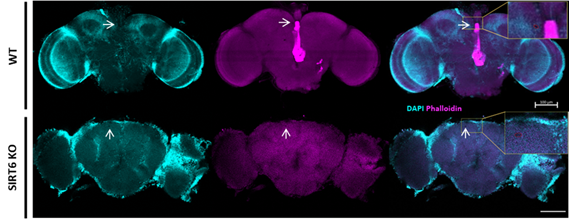Universités Bar-Ilan et Ariel (Israël) : contre l'arachnophobie, regardez Spider-Man

[:fr]

Ce sont des chercheurs des universités Bar-Ilan et Ariel, en Israël, qui sont à l’origine de cette découverte surprenante. Concrètement, ils expliquent que l’exposition à des phobies spécifiques pourrait permettre de lutter contre ces peurs. Ils ont donc diffusé des extraits de seulement sept secondes issus des films de super-héros à 424 personnes. Ils voulaient analyser concrètement l’impact que ces films auraient sur les personnes souffrant d’une phobie des araignées ou des fourmis.
Une baisse de 20 % des phobies

Bilan de l’étude, cette exposition à un court extrait des films permettrait de réduire les phobies de 20 %. « Être exposé pendant sept secondes à une phobie spécifique à un insecte dans un contexte positif réduit le niveau des symptômes de la phobie », précisent les professeurs Menachem Ben-Ezra et Yaakov Hoffman.
Si cette étude peut sembler anecdotique, elle confirme surtout un phénomène déjà connu, celui de l’impact psychologique positif des films de super-héros. Surtout, les chercheurs envisagent désormais de l’utiliser activement dans les thérapies cognitives.
On attend désormais que DC Comics finance une étude équivalente afin de redorer le blason du Chevalier noir. Et si Batman avait lui aussi des effets miraculeux sur la chiroptophobie, la peur des chauves-souris… ?
Publication dans Frontiers in Psychiatry
Source : LePoint.fr le
Lire aussi : Les super-héros, un phénomène juif ?
[:en]
As the Marvel Avenger Endgame premieres in movie theaters this week, two Israeli researchers are revealing that exposure to Spiderman and Antman movie excerpts decreases symptoms of spider and ant phobias, respectively. Exposure therapy for specific phobias (e.g., of ants and spiders) utilizes neutral exposure to a phobic stimulus to counteract an irrational fear. As one is increasingly exposed to the phobic stimuli one ceases to fear it. To date, the effect of positive exposure, albeit fantasy (e.g. in the form of Marvel movies), has not been attempted in cognitive behavioral therapies.

Prof. Menachem Ben-Ezra from the School of Social Work at Ariel University together with Dr. Yaakov Hoffman, of the Interdisciplinary Department of Social Sciences at Bar-Ilan University, exposed 424 subjects to Spiderman and Antman movie excerpts to see if spider and ant phobic symptoms would decrease.
Screening a seven-second excerpt of a spider scene from Spiderman 2 reduced participants’ post-viewing spider phobia (arachnophobia) symptoms score relative to their pre-viewing score by 20%. This impressive cost-benefit efficacy was similarly obtained for ant phobia (myrmecophobia) when viewing a seven-second excerpt from Antman. However, when participants were queried either about general insect phobia both pre- and post-viewing a seven second Marvel opening scene (common to all Marvel movies) or a seven second natural scene – there were no significant symptom reductions for insect phobia. This suggests that it was neither the calm (natural scene), nor the fun/fantasy associated with viewing a Marvel superhero movie, that was solely driving effects, but rather the specific exposure to ants and spiders in the context of a Marvel movie.
Prof. Ben-Ezra says that these results open a new direction in the efficacy of positive exposure which should be further considered. The findings suggest that a fun, available and in-vitro exposure may be very powerful. Dr. Hoffman notes that this is important, as in-vitro exposure is usually less potent — at least relative to in-vivo exposure — yet since in-vivo exposure can be difficult for some clients, it often isn’t utilized. Although another adequate form of in-vitro exposure is virtual reality, it is too scarce and unavailable. Thus, exposure to Marvel’s « good ole Spidey » may be an optimal solution. Such an intervention may also destigmatize therapy, especially in resistant cases, and encourage homework completion, often an integral part of cognitive behavioral therapy. Ways of maximizing these effects, along with the challenge of applying such interventions with other phobias, are being considered by the authors.

Aside from the scientific (potent new form of exposure) and clinical (potential efficacy of such exposure) implications, this article is timely in light of the many Marvel relevant movies of 2019 (Captain Marvel March 2019, Avengers Endgame April 2019, and Spiderman II in July 2019).
Prof. Ben-Ezra and Dr. Hoffman, both psychologists as well as avid Marvel superhero fans, point out that superhero movies may have many beneficial psychological attributes. Such movies not only help people feel better about themselves, they provide a contra to hectic and stressful lives by showing us the true underlying spirit of one confronting his/her fears. The researchers say such movies may be beneficial also for persons suffering from the aftermath of trauma. In the next stage of their research the authors will examine other benefits of Marvel movie viewing vis-à-vis post-traumatic stress disorder.
Their findings were recently published in the journal Frontiers in Psychiatry.
[:]







